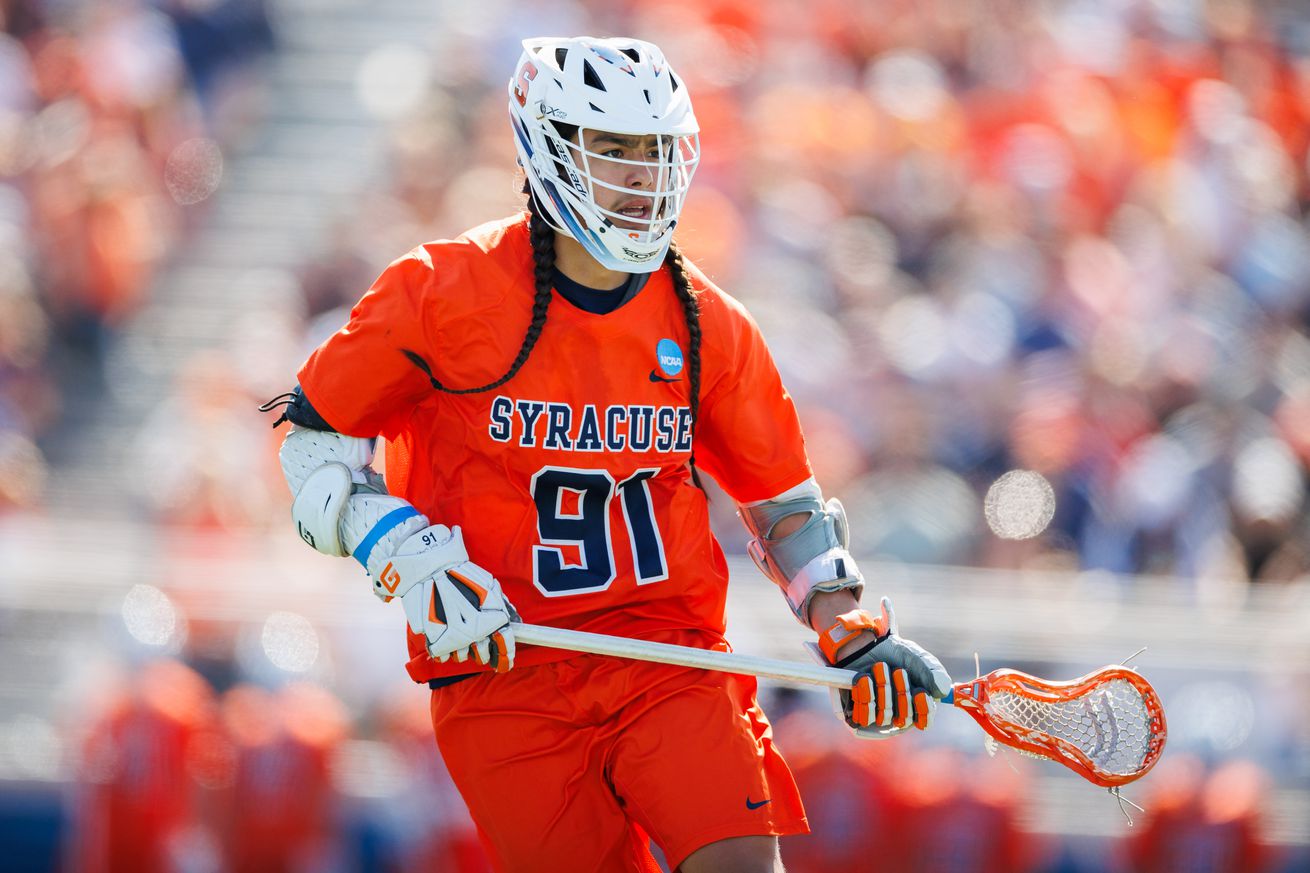
The episode focused on the origins and traditions of the Creator’s game.
There are very few sports with a history quite like lacrosse, the Native American game that dates back nearly a millennium.
There’s so much that makes it unique, especially when you go beyond what happens between the lines. In his new show Rabil’s Places, lacrosse legend and PLL co-founder Paul Rabil dives deep into the sport’s heritage and cultural impact across generations.
In the season one finale, entitled “The Creator’s Game”, Rabil travels to Upstate New York and the Onondaga Nation to learn about the origins, traditions and spirituality of the sport in its birthplace.
While there, he spoke with a pair of Syracuse Orange players in former All-American Jeremy Thompson and current rising junior Trey Deere to get their perspective on the Creator’s game and its meaning to the Haudenosaunee people.
The Haudenosaunee are made up of the Six Nations Confederacy of the Mohawk, Oneida, Onondaga, Cayuga, Seneca and Tuscarora nations. Thompson is part of the Onondaga Nation, while Deere is a member of the Mohawk Nation.
The Creator’s Game
In Episode 5 of Rabil’s Places, @PaulRabil travels to where the game was created and learn about the origins of lacrosse.
Streaming now on @ESPNPlus @OmahaProd | @ESPN pic.twitter.com/8KLOpaYokc
— Premier Lacrosse League (@PremierLacrosse) July 2, 2025
Lacrosse has as fascinating a history as any sport in the world, and one of the things that makes it so special is the way in which it connects the past to the present.
From its origins centuries ago in native communities on wide open fields that could go on for miles to the many forms it takes today, the game has a spirit that is pervasive even in the 21st century.
The epitome of that spiritual connection to the past is the wooden stick. The game of lacrosse was given to the Haudenosaunee by the Creator to maintain balance and harmony in the world, and the wooden lacrosse stick is a sacred object that embodies that gift.
In the episode, Jeremy Thompson talks about how they are given traditional wooden sticks in their cradles as babies. The game is embedded right from birth, and the stick reflects how special the game is and how much it means to the people.
Trey Deere, talking with Rabil, gave us a sense of its importance and meaning to him as a player:
“When I use my wooden stick, I try and keep a good mind and remember why I’m playing the game of lacrosse. And I feel like the game just means a little bit more when you’re using a wooden stick. Just the joy that it brings and knowing that I’m not only playing for the enjoyment of myself but I’m playing for others, and maybe even the people that aren’t even here…In 2023, when (legendary stick-maker) Alfie Jacques passed away, the next time we played, I used my ‘Alfie stick’ and dedicated the game to him”.
Trey scored three goals in that game using the stick made for him by Alfie himself in a beautiful and fitting tribute to the life of the legend.
Another important aspect of the sport is the concept of it as the ‘medicine game’, something else they discuss in the episode.
Thompson talked about the game being used as a way to bring people together, celebrate culture and help lift people’s spirits:
“This game was brought down to us, down to the people. It was used as a medicine. It’s a way to kind of bring people together. Obviously the game is a very physical game, and that’s a huge part of it. You’re out there to kind of bring your energy, you’re bringing it out within yourself and bringing it out to the rest of the people that you come in contact with, so you’re exchanging the energy. Or, if someone might be mostly down, or mentally down, this game can also be played to help lift that person’s spirits”.
It’s likely not something most modern-day lacrosse fans think about very often, but it’s truly amazing, and perhaps even important, to consider and remember where, why and for what purpose this game we all love originated.
And that circles back around to the wooden stick and its physical representation of the game’s history and meaning.
“We’re still here. We’re still people.”
Zed Williams (Seneca Nation) speaks on the deeper meaning of playing lacrosse with a traditional wooden stick- which he used for the opening reps of last year’s Indigenous Heritage Weekend: ⤵️
(Via Rabil’s Places, @OmahaProd) pic.twitter.com/GhilO62KDD
— Premier Lacrosse League (@PremierLacrosse) July 16, 2025
Late in the episode, Rabil talked with Virginia alum and Seneca Nation member Zed Williams, who spoke eloquently on the deeper meaning of the wooden stick and continuing to use it today:
“Anytime I’m able to play with a wooden stick, I kind of see it as a symbol because there are so many tribes and native cultures around the country; they feel that sense of pride. And I got so many text messages after that game, even though i used it for a shift. Like alright, we’re still here. We’re still people. We’re still proud, and we’re still strong. So i kind of see it as that symbol”.
It’s a really fun and fascinating episode that I think any true lacrosse fan would get a lot of enjoyment out of watching, and it’s pretty cool how much SU representation there was along they way, too!